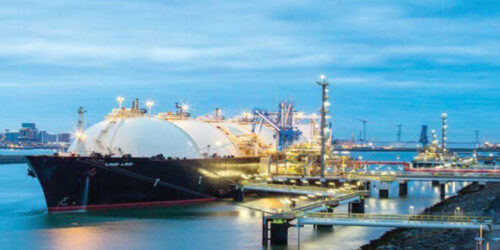Total feedgas deliveries to US LNG export terminals hit its highest level in four months Sept. 12 at 11.3 Bcf/d, based on nominations for the morning cycle; the total Sept. 13 was just shy of that level, at 11.29 Bcf/d, S&P Global Platts Analytics data show. Strong demand in Asia and Latin America was buoying markets.
Asian spot LNG prices rose Sept. 13 above $21/MMBtu, in part due to persistent global supply uncertainty.
As of early afternoon Sept. 13, there were two tankers moored at Freeport LNG, south of Houston, according to Platts cFlow trade-flow analytics software. A third tanker with a captain’s destination set for Freeport LNG was in the Gulf of Mexico not far from the channel that feeds the terminal.
“We continue to monitor the storm’s forecast track and plan to maintain normal site operations, operating within our hurricane protocols,” Freeport LNG spokeswoman Heather Browne said in an e-mail responding to questions.
Further southwest along the Texas coast, at Corpus Christi Liquefaction, one tanker was moored at the facility Sept. 13, while another destined for the terminal was in the Gulf near the channel that feeds the facility, Platts cFlow showed.
“We have initiated our preparedness plans and we’re prepared to take additional precautions if necessary,” Cheniere spokeswoman Jenna Palfrey said in an e-mail.
Platts Analytics forecasts that average annual US LNG feedgas demand will increase from 10.9 Bcf/d this year to 14.9 Bcf/d in 2026.
Currently, there are six major LNG export terminals in operation in the US. That total will rise to seven next year and eight by the middle of the decade, based on what’s already under construction. As many as four or more new export terminals could be sanctioned by the end of next year, based on projects that have already announced firm commercial support.
Global gas markets have continued their bullish but volatile trend with the Platts JKM and Dutch TTF hitting fresh highs in August, putting Asian spot LNG prices through the coming season well above traditional oil-indexed contract prices as well as oil-parity levels, according to Platts Analytics. The bull run has continued into September.





